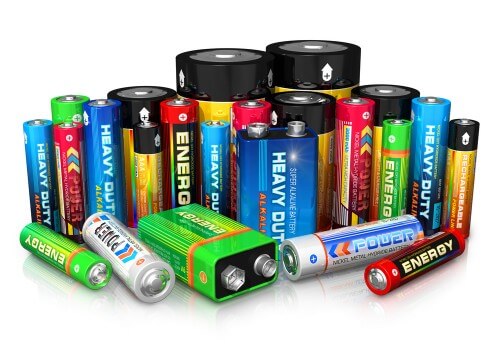Engineers have developed a new alternative to the usual batteries - in the future we will be able to print batteries

Battery printing is the future of green energy, at least that's what engineers at PARC, a famous research and development company located in California and owned by Xerox, think. Recently, the company introduced an economical process, which, similar to the way you squeeze a tube of toothpaste with different layers of paint, may be possible in the future to "squeeze out" a battery on all its components at once.
Nowadays building batteries requires many steps. First, two separate machines make electrodes by applying layers of energy-storing materials to metal sheets. After these sheets are dried and compressed, they are cut to size and wrapped around a plastic separator material that prevents shorts. And finally, the batteries are packed in a non-conductive material and filled with an electrolytic liquid that can conduct charge between the electrodes.
The new battery printing method simplifies this process. During an April 2015 American Society for Materials Research conference in San Francisco, PARC's Corey Cobb presented nozzles and materials that would allow manufacturers to print two-thirds of a battery in one go. The nozzle, which has two heads, can simultaneously secrete both a cathode based on lithium ions and a separating layer of polymeric plastic material. Right now, until Cobb finds materials that don't mix with each other during printing, the technician has to manually add a graphite anode. But when it becomes possible to print all three of these components at once, Cobb and her partners estimate that a three-layer process could reduce production costs by about 15%. Despite the current limitation, battery manufacturers have already expressed interest in the two-layer version. The performance of the new batteries is the same as the performance of batteries produced by traditional methods and composed of the same materials.
Cheaper batteries are the key to the production of cheaper electric cars and will allow electricity producers (in Israel mainly the electric company) to purchase and store electrical energy from unstable sources of wind and solar energy, energy that will be supplied to the electricity grid when needed. In the long term, it will be possible to print batteries in different shapes on demand so that they fit all kinds of electrical devices, which will free product designers from having to adapt their designs to batteries that are necessarily rectangular or circular in shape.
The article was published with the permission of Scientific American Israel
More of the topic in Hayadan:
- Storing electricity at home - a solution for electricity consumption during peak hours and regulating the electricity generated from alternative energies
- The challenge facing humanity
- A cheap aluminum battery that charges in a second

3 תגובות
The Israeli company Power Piper was closed about four years ago. There is no doubt that she was a pioneer of technology.
Of course PARC
Maybe you should tell PARK about the Israeli power paper..